About Me
About me and some reflections of mine 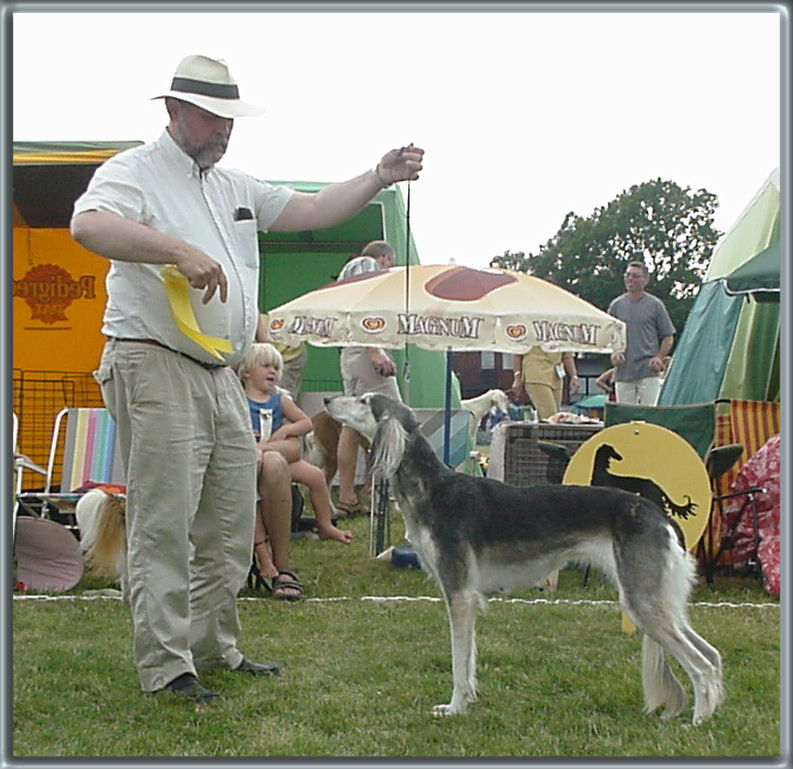 Elishama wins Best bitch-3 at SvSR Tammsvik 2003. Me wearing an italian hat. My professional life I was born in 1950 in Ume? and have lived in the region of Ume? for most of my life. At the end of the sixties I worked as an ombudsman for the Youth Union of the Liberal Party (Folkpartiets ungdomsf?rbund). I studied history and national economics from 1969 to 1971 at the University of Ume?, then I retrained as to become a welder and worked for ”Volvo Heavy Trucks” (Volvo Lastvagnar) in Ume? for about fourteen years. After getting an occupational injury and an extended leave from work due to the severity of my injury, I went back to the University and studied four and a half more years to become a teacher of social studies, history, religion and geography for grades 4 to 9. I have now been working as a teacher at the school of Savar since 1994 and for a number of years I also have worked as a remedial teacher (speciall?rare). My hobbies and free time activities My principal hobbies are history, religion, astronomy, role-playing, books, saluki and horses, not necessarily in that order. With regards to history my areas of ”expertise” are the Roman Republic, the Era of the Great Migration (folkvandringstiden), the Legend of King Arthur, the Swedish-Russian War 1808 to 1809 and the Age of Napoleon. I have on different occasions been organizationally active, e.g. I have been a citizen or member of, and an elected magistrate of, an international organization called Nova Roma since 2000. Nova Roma specializes on Roman culture, religion and history. I am also one of the founders and the Chairman of the ”Academia Thules ad Studia Romana Antiqua et Nova” or for short ”Academia Thules” (founded in the spring of 2001) which has offered courses in Latin, Roman history, Roman religion, Roman philosophy, Roman law and much more. In the fall of 2005 I founded, together with a couple of friends, an association that we named ”The Association for Interactive History” (F?reningen Interaktiv Historia) which 2009 set up a project that was named the ”Last Battle” and concerns the two hundred year’s jubilee of the Finnish war of 1808 and 1809 and the Battle at Savar in 1809. I was the Project manager of this huge undertaking it took most of my spare time. The ”Last Battle” was a huge success, with the king, queen and crown princess present and about 8.000 spectators watching about 200 soldiers reenact the whole battle of Savar from the beginning to the end. There were a lot of cannons and guns from the 1900th century and it was a huge ”show”. The public and media was amazed as it was the first real reenactment in Sweden. Today (2010) we are continuing the project in new forms and the organization is working with history, culture, books, 1900 century dancing, pedagogical work, sewing uniforms, sewing leather articles and role-playing. My pupils and friends Because of my job as a teacher a big chunk of my spare time dedicate to my pupils who want to see me privately. As a matter of fact I consider myself quite lucky as I have a lot of old pupils in my circle of friends. Many of them are active members in ?The Association for Interactive History?. My interest for salukis, the start and present life of Shamali kennel 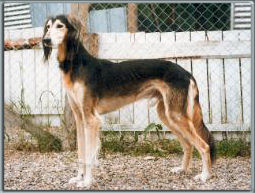 Int & Nord Ch Ben Huri’s Wadj Karmaz My interest for salukis started when my former wife, Inger Sj?str?m, bought Khalils Ceiba in 1974. In that period I also had a Groenendael, a Belgian Shepherd Dog. During the four years following the purchase of Ceiba the number of salukis began to increase. Among the new salukis were International & Nordic Champion Ben Huris Wadj Karmaz(Waj, born 1976), Nordic Champion Zohari Zari Ba Yefa (Zari, born 1977) and ”Sedeki” Una Uslub (Una, born 1978). These three salukis were to become the base for our kennel ”Shamali”. The first litter, the Q-litter, was born in 1980, there has been seventeen litters until now (August 2010) and we are now waiting for the eighteenth litter. My daughter Elin is now working actively with me on the breeding programme and has done so for quite some time now. Sedeki Lale Zar, our ”oldest” stud dog, lives with Elin outside of V?nn?sby and in addition Elin also cares for our Arab horses. I try to ride once a week as often as possible. I usually ride our stallion Grand and we ride into the villages, woods and hills close to the wonderful river of Vindeln. My breeding principles My starting point of view as a breeder has two sides, first and foremost as a historian and then as a breeder who attempts to maintain a scientific approach towards what I do in my breeding programme. The salukibreed has a cultural-historical heritage that I strongly believe every generation is obliged to maintain. The saluki is already perfect in its ”model” to serve its purpose, no generation that doesn’t practise hunting in its environment of origin with its original conditions has the right to manipulate this heritage. The saluki combines deadly strength and exquisite speed with its intelligence and noble attitude. It is this type of saluki that I want to breed so that future generations will be able to continue to enjoy the beauty and suppleness of the saluki. My starting point has always been to conduct my breeding from a scientific point of view. This is one of the reasons for the selection of the stud dogs that I have used throughout the years, mostly have been males that were not considered ”breeding matadors” i.e. frequently used studs, this to broaden the breeding base and also to use good dogs that others overlook. I have always strived to increase the number of males that have been used in my breeding programme. That is why the number of broodbitches has approximately been equal to the number of studs, as a compliment to that tactic most bitches have only been bred once, this to achieve the maximum number of effective breeding dogs. My guru, other models and friends among breeders 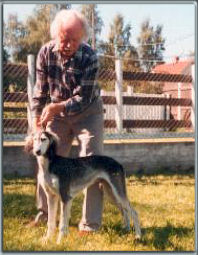 Nils-Lennart with young Shamali Amir I am in many ways self-taught, but it is only natural that I have had a few guides in my career as a breeder. If I would name someone as my guru it would be Nils-Lennart Olsson at Kennel Ben Huri. Many were the hours that I spent at his kitchen table discussing and learning. Nils- Lennart, who died of pneumonia at 95 years of age on the 5th of February 2009, was from a different and older generation. His way of thinking was not easily understood using modern terms, but after a couple of years I found that his way of thinking was very close to a scientific approach indeed, even if it took some time to ”translate” into modern terms. I freely acknowledge the influence of his thoughts and breeding programme, as well as the influence of our foundation stud, Ben Huris Wadj Karmaz. Donald Wieden at Kennel Sedeki is another breeder who have inspired me alot, although we didn’t share exactly the same ideals. I have always admired his way of expressing the main principles of saluki breeding that we shared and his pedagogical way of explaining why the saluki should be as it is. It is no chance of luck that I have owned and bred two salukis, ”Sedeki” Una Uslub and Sedeki Lale Zar, from his breeding. 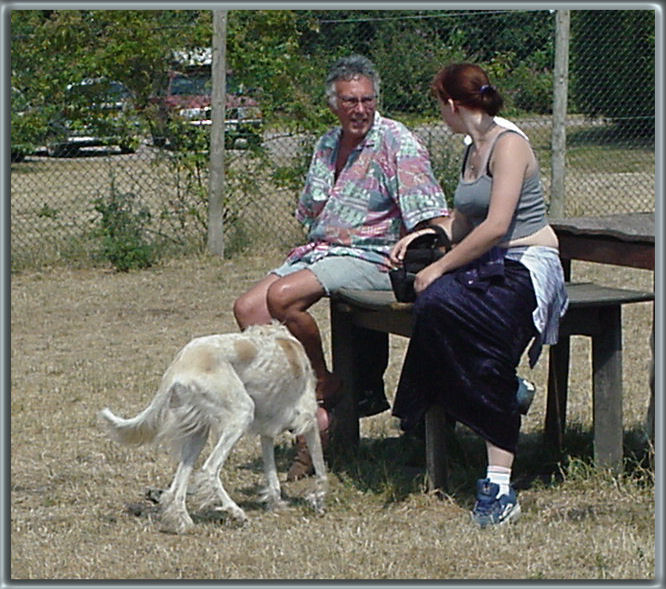 Don & Elin with Sedeki salukis 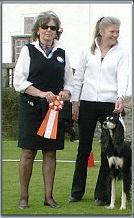 Birgitta Nordqvist(left) The last breeder that I want to mention in this category is Birgitta Nordqvist at Kennel Zohari, especially her dedicated breeding to her very special type of saluki won my respect and admiration. Further her open-minded approach to other variations of salukis and toward other breeders still sets a good pattern to me. Zohari Zari Ba Yefa meant a lot to Shamali both as a foundation bitch and because of the great personality she was. Otherwise I have a lot of friends among the Swedish saluki breeders in the saluki-world. I will mention some: Bosse Forsberg and Elizabette Kallin-Forsberg at Kennel Khalil, Karin Hedberg at Kennel Kashmani, Gunilla and Bosse Skoglund at Kennel Shaamroc, Ingela Johansson at Kennel Ritzas, Karin and Per Nordal at Kennel El Cazzino, Carina Pettersson and Ingela H?gg at Kennel Al Wathba, Katarina Petersson at Kennel Sadaqa, Rita and Jan Lindhom at Kennel Al Alim, Ewa Andersson at Kennel Amiyat, Maria Nordin and Marie Brand?n at Kennel Badavie, Monika Nilsson at Kennel Baklava, Elisabeth Andersson at Kennel Barakisch, Irene Andersson at Kennel C’est Esmeras, Agneta Doverholt at Kennel Dahaqin, Katarina Widstr?m at Kennel Dawati, Kim Togeretz at Kennel Min Arabi, Nicklas Eriksson and Ingunn Solberg Eriksson at Kennel Qirimizi, Marita Aar?s at Kennel Red Hawks, Elisabeth Jacobsson at Kennel Shafaq, Marie Borsl?v at Kennel Rahimas and last but not least Lena St?lhandske at Kennel Schiram. I mention all these breeders, and I still fear I have missed one or two that I consider friends in one way or the other, as I want to demonstrate that it is possible to have many friends among other saluki breeders. The crux of the thing is to find time to keep the relation living, which I never seem to be able to find enough of. Lack of time and my sparse travelling and showing probably also is the only reason that I don’t mention every breeder as we haven’t had any opportunity to develop a relation. I feel that good relations between breeders in a breed lay a good and much needed foundation for present and future cooperation, especially when it comes to the breeding of each kennel. Not everybody needs to be close friends, but we should all be able to talk to each other and no ”fences” should be allowed to hinder us from using each other’s studs when that is the best alternative. A good relation and a serious approach towards the preservation of the breed was one of the bases for our successful defence of the saluki standard when it last was attacked. That day I was deeply grateful for the basically friendly relation the Swedish breeders had with each other. Commissions of trust in the dog world I have held different commissions of trust within different dog organisations during the years. I have been a KF-representative (delegate to the Kennel Club Congress) and vice chairman of the Kennel Club region of V?sterbotten. In the region of V?sterbotten in the Swedish Sight hound Club I have been chairman and I have been a HS member (member of the national main board of the Swedish Sight hound Club of Sweden) for ten years. I have also been a member of the Breeding Committee of the Swedish Saluki Club (Svenska Salukiringen) and also served at its chairman for a period. Further, I have served as both chairman and I still am a member of the Standard committee of the Swedish Saluki club. Both in this position and as a private member of the Saluki Club I have had the opportunity to defend the standard of saluki, always together with Karin Hedberg of Kennel Kashmani. I am proud to say that I, at one point, used my influence at the Congress of the Kennel Club to bring the latest crises of the standard to the attention of the Swedish Kennel Club, which gave us a platform for an International campaign to bring back the standard of 1923. We achieved what we strived for when the new standard was approved by FCI in 1997, but this was achieved after a lot of work, especially by Karin Hedberg. Although the 1923 standard is clad in the robes of the ”Jerusalem model” it is still what rules how a saluki should look like according to FCI. Besides these assignments I have also been an active lecturer of basic genetics and ethology within the Swedish Kennel Club. Showing and other outward achievements The Shamali salukis were exhibited more frequently during the first fifteen years. Since I became the sole owner of the kennel I tend to show more sparingly even though I try to show at what I consider more important, less far off and more ?pleasant? shows, when I have time available. After many successful achievements at shows and lure coursing I also received my most prestigious award, the ?Hamilton Award?, which I consider the greatest achievement for the Shamali kennel. 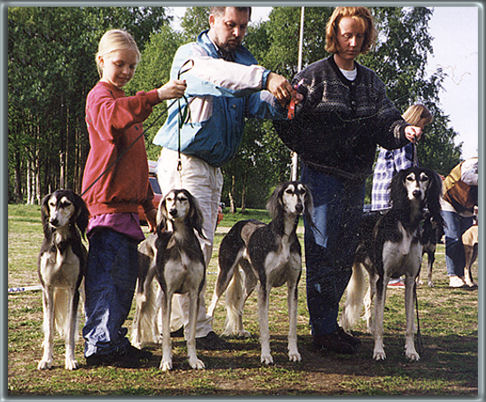 Duwaliya, Bikri, Aqila & Calif The HQ of the Shamali kennel I have been living for approximately thirty years in the hamlet of Tjalen within the village of Savar, 20 km outside of the university city of Ume?. Here my salukis have at their disposal a big fenced-in yard where they may wander, race or lay around freely, climate permitting. The same goes for the interior at the ground floor of my house, with exception of my library/study where the salukis are not permitted unless I am in that room myself. They know it and leave the study as soon as I do. My group/pack of salukis is substantially smaller now than it was about fifteen years ago when it consisted of a dozen grown up salukis living with us here in Tj?len. 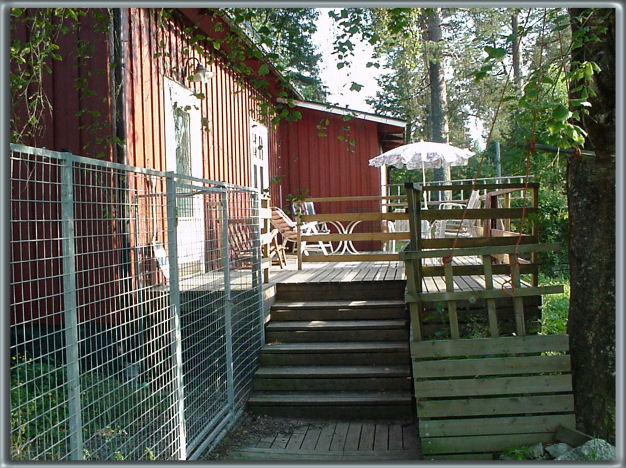 In the summer my salukis, friends and I spend a lot of time outside on my wonderful terrace. In the summer a large teak table and six wonderful chairs, gifted by a large group among my friends, will be standing as a great memory of my 60th birthday (2010) and the 30th jubilee (2010) of Kennel Shamali. Here you will probably find the master, during the summer, himself sitting most of the day in his favorite easy chair with a pile of books and newsletters by his side and with a glass of exquisite smoky single malt whisky in one hand and a book or a newsletter in the other. A Thank You I would like to end this presentation by thanking my good friend, Shamali Fajr al Nasr?s and Shamali Imram Nadir ibn Raadin’s master, Benny Wallin for the gigantic work he has twice put into building this website. Christers contact info: Mail: info@shamali.se Phone: +46 09(0) – 520 23 Mob: +46 07(0) – 643 88 80 Elins contact info: Mail: elin_shamali@hotmail.com Mob: +46 07(0) ? 683 89 59 |